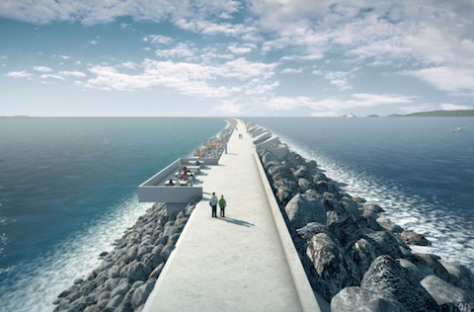The creation of the first full-scale tidal lagoon will be debated by the Cardiff Council for the duration of the month to harness the second highest tidal range in the world
High resolution image of what Cardiff Bay lagoon will look like when completed
The cabinet will weigh up the options to create the Cardiff Tidal Lagoon by gathering independent, expert advice on the opportunities and issues that a lagoon could bring to the area. They will do this by assessing the Hendry review, which was set up by the UK government to assess the case for tidal lagoons in the UK.
Phil Bale, leader of the City Council believes that this creation will potentially be a project of global significance but has stressed how important it is that the City Council understand and fully review all potential issues.
The lagoon holds a potential to invest around £8 billion of private capital and in early estimations, tidal lagoon power have suggested that they would need over 3,000 construction workers and a potential to create over 8,000 Welsh manufacturing jobs in the projects supply chain. As well as potential economic benefits, company directors at Tidal Lagoon Power believe that the lagoon will be cost effective as it will meet the annual electricity requirement to power every home in Wales.
Although industry leaders have suggested that the potential for economic and environmental impact seem positive, there has still been some concern in terms of a cost benefit analysis. Environmental scientist Phil Jones said, “Electricity coming from the lagoon will cost much more, not to mention the cost of building it.”
The Cardiff tidal lagoon is expected to be a long winded project in order to ensure all benefits and potential problems are assessed. A spokesperson at Tidal Lagoon Power said, “Building on Swansea’s tidal lagoon, we expect to make a formal application for a consent order in 2018.”


